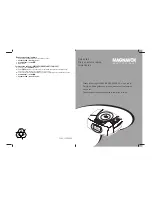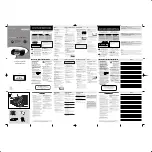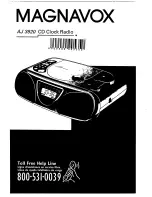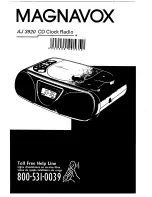
7.4 RADIO DATA FORMATS
The data rate over the air can be set up independently of the rate set for the serial interface, but the
over-air rate should be set either at the same speed or a lower speed than the serial interface rate. The
radio baud rate should be set at the minimum possible to maintain the required throughput, lower
speeds will give better results in poor signal conditions
The radio signal can be set up to operate using 7 or 8 bit data, 1 or 2 stop bits, and odd, even or no
parity. This setting is also independent of the serial port setup. This flexibility allows compatibility
with other radios.
When using the URT500 in conjunction with CMD400 radios manufactured by Pacscom Ltd, it should
be noted that the CMD400 does not set these parameters independently. With one exception the radio
signal format in the CMD400 is set to be the same as that of the serial port even though the baud rates
can be different. The exception is mode C where the radio signal format did not include parity. If
compatibility with this radio is required in Mode C, parity must be disabled in the URT500 radio signal
regardless of the serial port configuration. Later versions of the CMD400 had an additional mode
entitled “mode C plus parity” in which parity was included, use of this mode did not give rise to the
exception.
7.4.1
SYNCHRONOUS/ASYNCHRONOUS MODEM OPERATION
The radio modem can be programmed for asynchronous or synchronous operation at baud rates up to
1200. At baud rates of 2400 or more, modem operation may only be synchronous. This relates to the
over-air signal and has no bearing on the format of the data presented at the serial interface port
In synchronous mode inverted NRZI encoding is used where a one is represented by a transition in the
binary data, every transmitted bit fits into a time slot defined by the baud rate, this allows a phase
locked loop to lock on to the data stream to give better performance in noisy conditions, the inverted
NRZI encoding allows this to continue even when the signal is idling sending stop bits. The inverted
NRZI encoding gives a further advantage with GMSK signalling since the polarity of the signal is
unimportant.
In asynchronous mode NRZ encoding is used where a “one” tone represents a binary one, and a “zero”
tone a binary zero, whilst each character consists of bits of equal duration defined by the baud rate, the
time between the end of a stop bit and a following start bit may be arbitrary. This prevents the
implementation of a phase locked loop to improve signal to noise performance but does allow use
within older systems that do not implement synchronous transmission or NRZI encoding.
7.5 OPERATING MODES
7.5.1
TRANSPARENT MODE
The radio has no knowledge of the data it is transmitting, data is simply transmitted and received under
hardware control with the option of RTS control or initiation of transmit after receiving serial data, with
CTS providing an optional flow control. This configuration is useful when expanding older systems
where the radios must be compatible with others of
various manufacturers.
7.5.2
PROTOCOL SPECIFIC MODE
The radio recognises a complete frame and only transmits and receives data conforming to that format.
No addressing of radios or routing of data is performed. Protocols such as MODBUS & DNP3 can be
supported in this way.
7.5.3
ROUTING MODE
The radios recognise a protocol specific frame and the address to which the frame is to be sent.
Routing information must be stored in each radio for each destination address that requires the use of
repeaters or store & forward nodes. Any radio in the system can operate as a repeater/store & forward
node. The radio does not perform any acknowledgement or retries. Any protocol using a fixed address
field such as MODBUS, RFT ROUTING can be supported.
URT500 Manual
Page 27 of 42
Rev. C – 6 August 2008















































